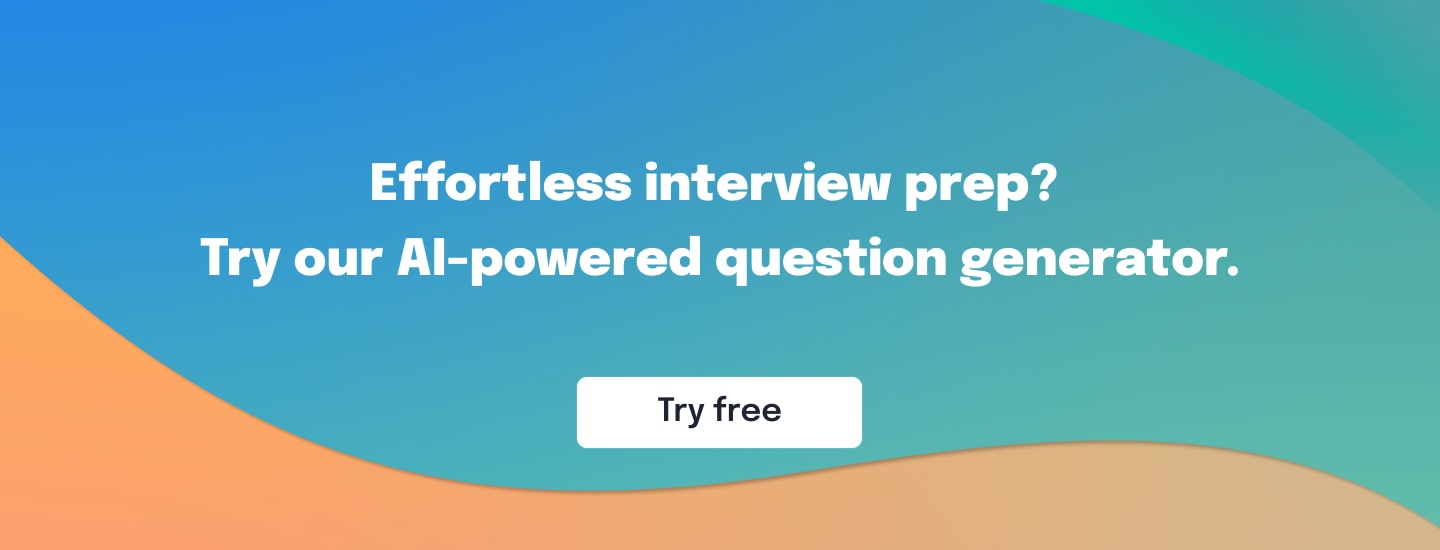When you’re looking to hire a Senior Java developer, it’s a journey filled with unique challenges. Our experience has shown that finding the right fit isn’t just about technical skills. It’s also about finding someone who aligns with your company’s values.
Interviewing candidates to truly understand if they’re a good fit for your organization can be tough too. We’ve put together this helpful resource based on our experience. These questions go beyond the surface and give you insights into a candidate’s Java skills, project experience, and coding philosophy.
This guide is here to help you tackle these challenges and find the Senior Java developer who’s the perfect match for your team.
Table of Contents
1: Can you explain the concept of multithreading in Java and discuss the advantages and disadvantages of using it for concurrent programming?
Expected Answer: Multithreading in Java enables the concurrent execution of tasks. It’s beneficial for tasks that require responsiveness and parallelism. However, it introduces challenges like synchronization issues and increased complexity.
Explanation: This question evaluates the candidate’s grasp of multithreading’s complexities, which is vital for writing high-performance, concurrent Java applications.
1.1: How do you handle synchronization in a multithreaded Java application to prevent race conditions and ensure data integrity?
Expected Answer: We use synchronized blocks or methods to protect critical sections of code. Additionally, Java provides high-level concurrency utilities like `java.util.concurrent` for more advanced synchronization.
Explanation: This delves into the candidate’s practical experience in safeguarding data integrity in multithreaded applications, a critical concern in concurrent programming.
1.2: Can you discuss the Java Memory Model (JMM) and its role in multithreaded applications?
Expected Answer: The Java Memory Model (JMM) defines the rules and guarantees for how threads interact with memory. It ensures visibility of changes made by one thread to other threads, which is vital for proper synchronization.
Explanation: The candidate’s knowledge of JMM demonstrates their ability to create reliable, thread-safe Java applications.
2: What is Java’s garbage collection, and how does it work?
Expected Answer: Java’s garbage collection is an automatic memory management process that identifies and reclaims memory occupied by objects no longer in use. It works by detecting unreferenced objects and freeing up their memory.
Explanation: This question assesses the candidate’s knowledge of Java’s automatic memory management, a fundamental aspect of Java development.
2.1: How can you optimize garbage collection performance in a Java application, especially for large-scale systems?
Expected Answer: We optimize garbage collection by tuning parameters, selecting the right garbage collector (e.g., G1, CMS, or Parallel), and minimizing object creation, all of which improve the performance of the application.
Explanation: Here, we can explore the candidate’s practical experience in fine-tuning garbage collection, critical for high-performance Java applications.
2.2: Discuss the difference between garbage collection in Java and manual memory management in languages like C++. What are the advantages and disadvantages of each approach?
Expected Answer: Java’s garbage collection automates memory management, reducing the risk of memory leaks but introducing overhead. Manual memory management in C++ offers more control but increases the risk of memory-related bugs.
Explanation: Understanding these differences is essential for effective memory management and resource utilization.
3: Can you explain the principles of object-oriented programming (OOP) and how they are applied in Java?
Expected Answer: OOP principles like encapsulation, inheritance, and polymorphism are fundamental in Java. Encapsulation ensures data hiding, inheritance enables code reuse, and polymorphism supports flexibility in class design.
Explanation: This question evaluates the candidate’s grasp of OOP concepts, which are crucial for clean, extensible Java code.
3.1: Inheritance is a key concept in OOP. Could you discuss situations where you would prefer composition over inheritance in Java?
Expected Answer: Composition is favored when you want to achieve code reuse without creating tight coupling between classes. It promotes flexibility and reduces the risk of unintended side effects.
Explanation: This question explores the candidate’s practical experience in designing robust and adaptable Java code.
3.2: How does Java support polymorphism, and can you provide an example of its use in a real-world Java project?
Expected Answer: Java supports polymorphism through method overriding and interfaces. In a project, we used polymorphism to create a common interface for various file format parsers, allowing us to parse different formats using a single interface.
Explanation: Practical examples demonstrate the candidate’s application of polymorphism in solving real-world challenges.
4: Describe your experience with Java frameworks and libraries. Have you worked with Spring, Hibernate, or other popular Java frameworks?
Expected Answer: Yes, I’ve extensively used Spring for building enterprise-level applications, providing features like dependency injection and transaction management. Hibernate was my choice for ORM, simplifying database interactions.
Explanation: This question evaluates the candidate’s practical experience in using frameworks, a key aspect of Java development.
4.1: Can you discuss a challenging problem you encountered while using Spring and how you resolved it?
Expected Answer: In a project, we faced performance issues due to heavy database transactions. We optimized it by configuring Spring’s transaction management to use batch commits, significantly improving application performance.
Explanation: Real-world problem-solving is crucial for practical Java development, especially when using complex frameworks like Spring.
4.2: How does Spring Boot differ from the traditional Spring Framework, and in what scenarios would you choose one over the other?
Expected Answer: Spring Boot simplifies application setup and development by providing convention over configuration. We would choose Spring Boot for rapid application development and microservices, while the traditional Spring Framework might be preferred for more extensive enterprise applications.
Explanation: Understanding when to use each framework demonstrates the candidate’s ability to make informed architectural decisions in Java development.
5: Explain the concept of dependency injection and how it’s implemented in the Spring Framework.
Expected Answer: Dependency injection is a fundamental principle in Spring. It allows the injection of dependencies rather than hard-coding them. An understanding of this concept is essential for building modular, maintainable Spring applications.
Explanation: This question assesses the candidate’s knowledge of core Spring concepts, which are crucial for building scalable and maintainable Java applications.
5.1: What are the different types of dependency injection in Spring, and when would you use each type?
Expected Answer: There are constructor, setter, and field injection. Constructor injection is favored for required dependencies, while setter and field injections are used for optional dependencies.
Explanation: Knowing when to use different injection types demonstrates the candidate’s ability to design flexible and testable Spring components.
5.2: In a Spring Boot application, how do you configure external properties, and why is this important for application flexibility?
Expected Answer: External property configuration, often through `application.properties` or `application.yml`, allows for dynamic configuration changes without code modification, enhancing application flexibility.
Explanation: Understanding property configuration in Spring Boot highlights the candidate’s knowledge of a practical aspect of application configuration.
6: Have you worked on distributed systems or microservices architecture in Java? Can you discuss the challenges you faced and how you addressed them?
Expected Answer: Yes, I’ve worked on distributed systems and microservices. Challenges include service discovery, load balancing, and resilience. We addressed them by implementing the Circuit Breaker pattern and using tools like Spring Cloud for service discovery and configuration management.
Explanation: This question explores the candidate’s practical experience in solving challenges specific to distributed systems and microservices, such as service discovery, load balancing, and resilience.
6.1: What tools or libraries have you used for building and managing microservices in Java, and what were the advantages of using them?
Expected Answer: We used Spring Cloud for building and managing microservices. It simplified service registration, discovery, and configuration, and provided robust fault tolerance mechanisms through Hystrix.
Explanation: Knowledge of microservices tools indicates the candidate’s ability to design and implement robust, distributed systems.
6.2: Can you discuss strategies you’ve employed to ensure data consistency and reliability in a microservices architecture?
Expected Answer: We implemented the Saga pattern for distributed transactions and used event-driven architecture with Apache Kafka for ensuring data consistency and reliability across microservices.
Explanation: This question evaluates the candidate’s understanding of the complexities of data management in a distributed system, a key consideration in microservices architecture.
7: How do you handle security in Java applications, especially in web-based systems?
Expected Answer: Security is vital in Java applications. We handle it by implementing authentication and authorization mechanisms. In web-based systems, we use frameworks like Spring Security to secure endpoints and ensure data protection.
Explanation: This question assesses the candidate’s awareness of security best practices, crucial for safeguarding sensitive data and ensuring application integrity.
7.1: Have you worked with Spring Security, and can you describe how it’s used to secure a web-based Java application?
Expected Answer: Yes, we’ve used Spring Security extensively. It provides features like user authentication, role-based authorization, and protection against common web security vulnerabilities like CSRF and XSS.
Explanation: Understanding Spring Security is crucial for safeguarding web-based Java applications from threats and unauthorized access.
7.2: Can you explain the concept of OWASP Top Ten and how it applies to Java web application security?
Expected Answer: OWASP’s Top Ten is a list of the most critical web application security risks. Understanding these risks and implementing mitigations is crucial for identifying and addressing vulnerabilities in Java web applications.
Explanation: Knowledge of common security risks helps the candidate design secure Java applications and protect against common threats.
8: Could you describe your experience with RESTful API development in Java?
Expected Answer: I have extensive experience in RESTful API development in Java. It involves resource modeling, HTTP methods, and status codes to create scalable and interoperable APIs.
Explanation: This question evaluates the candidate’s knowledge of designing RESTful APIs, including aspects such as resource modeling, HTTP methods, and status codes, which are essential for building modern web applications.
8.1: Can you explain the differences between REST and SOAP, and why RESTful APIs are commonly preferred in modern web development?
Expected Answer: REST is favored for its simplicity, scalability, and statelessness. It uses standard HTTP methods and is easier to implement compared to the more complex and rigid SOAP protocol.
Explanation: Knowledge of the differences between REST and SOAP demonstrates the candidate’s awareness of web service technologies, a critical consideration for API design.
8.2: How do you handle authentication and authorization in a RESTful Java API, and what are the best practices for securing endpoints?
Expected Answer: We handle authentication using mechanisms like OAuth2 or JWT and implement proper authorization mechanisms. Best practices include token-based authentication and role-based access control to secure endpoints.
Explanation: This question assesses the candidate’s knowledge of security practices, crucial for safeguarding APIs against unauthorized access and data breaches.
9: Can you discuss your experience with database management and ORM (Object-Relational Mapping) in Java applications?
Expected Answer: Database management and ORM are essential in Java applications. I’ve used technologies like Hibernate and JPA to simplify database interactions and ensure efficient data persistence.
Explanation: Here, we can evaluate the candidate’s expertise in handling data persistence in Java applications, a fundamental aspect of many software projects.
9.1: How do you optimize database queries and ensure efficient data retrieval in a Java application, especially when dealing with large datasets?
Expected Answer: Optimizing database queries involves techniques like indexing, query optimization, and caching. These practices are crucial for ensuring efficient data retrieval, especially in applications dealing with large datasets.
Explanation: Knowledge of query optimization is crucial for building Java applications that perform well, especially in scenarios involving extensive data processing.
9.2: Can you explain the advantages and disadvantages of using an ORM like Hibernate in Java applications, and in what scenarios would you choose to use plain SQL instead?
Expected Answer: Hibernate simplifies data access but introduces some overhead. We’d use it for rapid development and complex mappings. In cases where performance is critical, plain SQL queries provide more control and efficiency.
Explanation: This question assesses the candidate’s understanding of the trade-offs between using ORM frameworks and writing custom SQL queries in Java applications.
10: How do you handle and log exceptions in a Java application, and what are the best practices for effective error handling and debugging?
Expected Answer: Exception handling, logging, and debugging are crucial for maintaining application reliability. We catch exceptions, log relevant information using tools like Log4j, and use debugging tools to trace and resolve issues effectively.
Explanation: It assesses the candidate’s knowledge of exception management and debugging techniques, which are essential for diagnosing and rectifying problems in Java applications.
10.1: Can you discuss your experience with tools or libraries like Log4j or SLF4J for logging in Java applications, and why are they important?
Expected Answer: I’m experienced with Log4j and SLF4J, which are vital for effective application monitoring and debugging. Log4j offers flexible logging to various destinations, while SLF4J acts as a compatibility layer for different logging frameworks. These tools help track application behavior, detect anomalies, and diagnose issues, making them indispensable in ensuring application reliability, especially in distributed environments.
Explanation: This question explores the candidate’s practical experience with logging tools, which are essential for tracking and troubleshooting issues in Java applications effectively.
10.2: In a distributed microservices environment, how do you ensure consistent error handling and logging across multiple services? Can you discuss any strategies or patterns you’ve used for centralized error tracking?
Expected Answer: In a microservices architecture, we implement centralized error handling and logging using tools like ELK stack or centralized logging services. This ensures consistent error tracking and simplifies debugging in a distributed environment.
Explanation: This question assesses the candidate’s understanding of maintaining uniform error-handling practices and logging mechanisms across microservices, an essential aspect of ensuring traceability and diagnosing issues in distributed systems.
Final Thoughts
As we come to the end of our discussion about interviewing Senior Java developers, remember that finding the right fit goes beyond a checklist. It’s about discovering individuals who not only have strong technical skills but also bring innovation, problem-solving abilities, and a collaborative mindset.
During your interviews, remember that finding the perfect candidate is a multifaceted journey. It’s not just about their skills but also how well they fit into your team and company culture.
In addition to these questions, consider using i1, an AI assistant specialized in vetting talent. With its deep learning capabilities, you can create a custom interview process tailored to your company’s standards and values, giving you more control over the vetting process and helping you find the ideal Senior Java developer for your team.
So, use these questions as a starting point, adapt them as necessary, and trust your instincts as you navigate the hiring process. Best of luck with your hiring journey!






